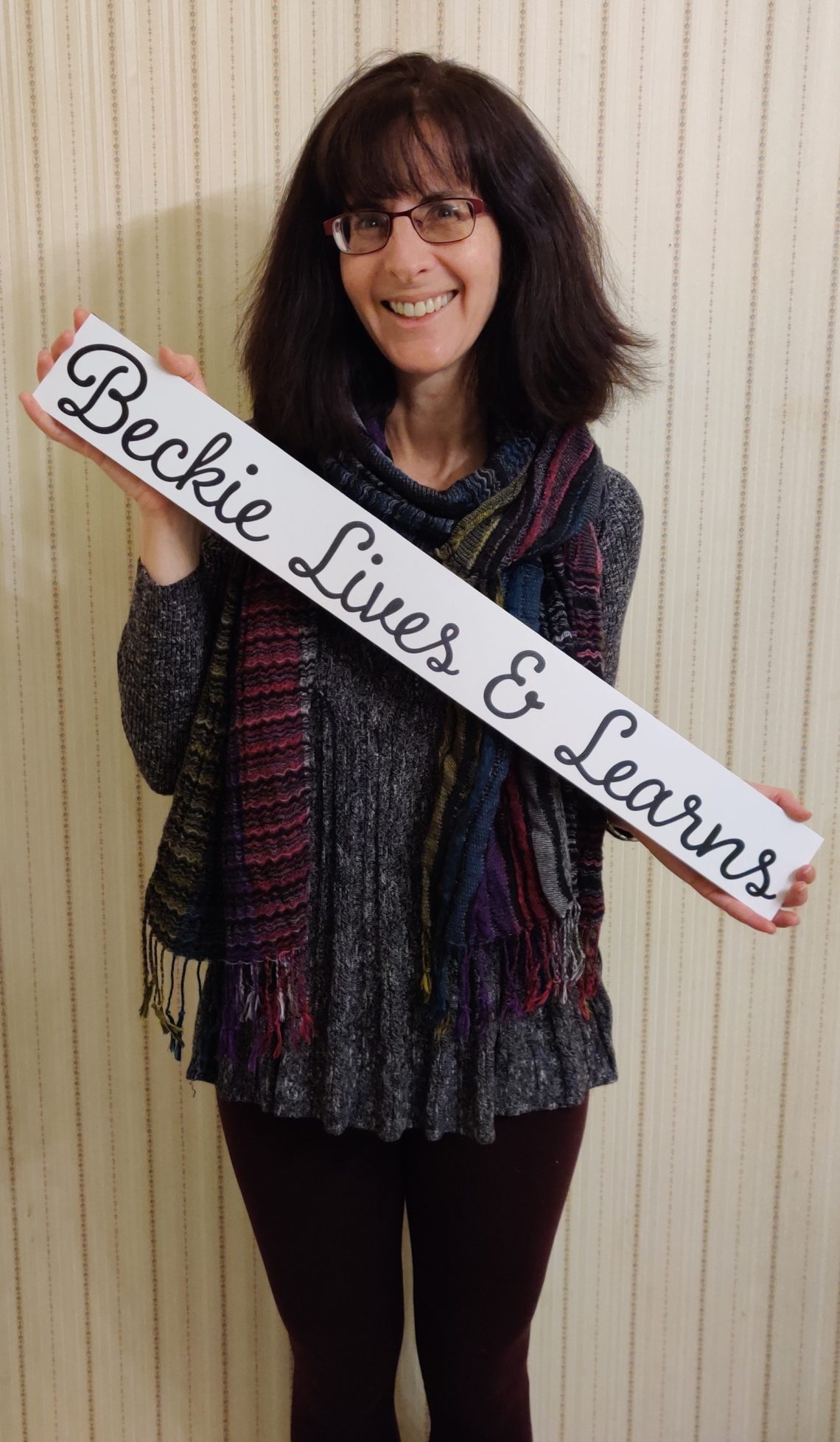
It’s a Sign! (aka The Birth of a Banner)
I have known Andrew for quite a while (our kids have gone to school together since they were little), but I honestly never really knew what he did for a living. Guess what. Now I know! When I posed the question on-line of who would be interested in teaching me something new, he offered to introduce me to THE WORLD OF SIGNS (my emphasis : ) )! I had a behind-the-scenes look at a business about which I knew nothing.
What is the name of your company?
Creative Edge Visual Solutions http://www.creativeedgechicago.com/
How did you get into this industry? Does your previous education/background tie in to your current work?
After my high school graduation, I had the opportunity to spend a year in Israel. When I got back, I went to Oakton Community College and took several art, photography and graphic design classes and fell in love with the craft. After Oakton, I enrolled at Columbia College of Chicago where I majored in Graphic Design. While at Columbia, I was very fortunate to have 3 jobs simultaneously in the graphics world…
Hamakor Gallery
I worked closely with their lead designer for many years to create their mail order catalog as well as oversaw the print/mailing process.
A small family owned desktop publishing company
Worked on many newsletters and brochures that helped hone my layout skills.
A Chicago-based sign shop
I was the production manager for a small 6 person sign shop.
What is one/are some of your favorite aspects of this work?
Easy… Every project is different, every project is like a puzzle and I have a deadline to put it all together. I take all the elements; design, size, location, complexity, materials, price and timing and calculate it all to make them all come together just like a puzzle.
What part is the biggest pain or something that you dislike about it?
Working outdoors in extreme temps. This one particular project I was working on had to be done in the summer… we had to install vinyl graphics on metal (which absorbed the summer heat) so we had to get to the location at 4:00 am (when it was cooler) because it was going to be like 85º by 9:00 am and the vinyl gets really gummy at high temps.
Cold temperatures are also no fun… LOL!
What is something that you knew you had to learn to do this type of work?
First… Common Sense!
Second… Design.
After that, everything fell into place.
What is something you learned over the years that, originally, you didn’t know you didn’t know?
Even though every project is different, there are still things that carry over from project to project. But with that being said, every so often there is something that comes up that I could say “Why didn’t I ever think of that”.
What changes have you seen in this industry over the years?
The sign & graphics industry keeps on evolving. The technology is getting faster, the graphics are getting crisper, more eco-friendly and more versatile materials are always becoming available.
What changes do you envision for the future? What changes are you thinking of making in the years ahead?
Well, just when you think things can’t get better… something always comes up in this industry. New longer lasting inks, better adhesive vinyl, more recyclable materials. Who knows what’s next!
Share a piece of wisdom gained over the years. Is there something that you have learned through your work that is relevant to those outside your industry? Enlighten me! : )
Wisdom… hmm. Not necessarily wisdom but passion… I always feel something special when I complete a project. I can look back and say “I did that”. I remember when my twins were very young and I used to do a lot of work for the Museum of Science and Industry… the kids would always say “Let’s go to Daddy’s museum”. That always made my work feel special. I love doing what I do, I love to work with the clients to achieve their goals.
Is there anything else that you would like to share or you think would be interesting to learn?
Look around, it is easy to take for granted how signs impact our daily lives. It is easy to miss them when you are not thinking about them. The next time you are at a store, a museum, a restaurant or even a parking lot, look around… you just might see my work.
After meeting with Andrew, I “grilled” him some more (I just wanted to make sure that I accurately shared with you what he shared with me).
You describe your work like being in “The Matrix” Can you explain this?
Just like in the movie The Matrix, I see every project like the code from the movie. I take all the info from the client; what they are looking for & their physical space available and come up with different scenarios for their project. It’s like putting together a 5,000 piece puzzle.
What are some examples of troubleshooting and “on the fly” decisions you have made with your work and projects?
I always hope that a project goes without a hitch. However, sometimes things can change from when we originally met with the client… a wall may get damaged or an obstacle is now in our way. One time I met with a client and between our meeting and the install, a wall was actually removed. I do my best to be able to adapt and overcome a situation when it arises, so we rarely need to cancel or reschedule an install.
What are some of the services you provide that people may not normally think about when thinking about signs?
We offer a wide range of sign & graphic services…
Offset Print Services
Business Cards
Letterhead
Envelopes
Brochures & Fliers
Signs
Banners
Wall Murals
Vehicle Graphics
LED Message Boards
Illuminated Signs
Design Services
Installation Services

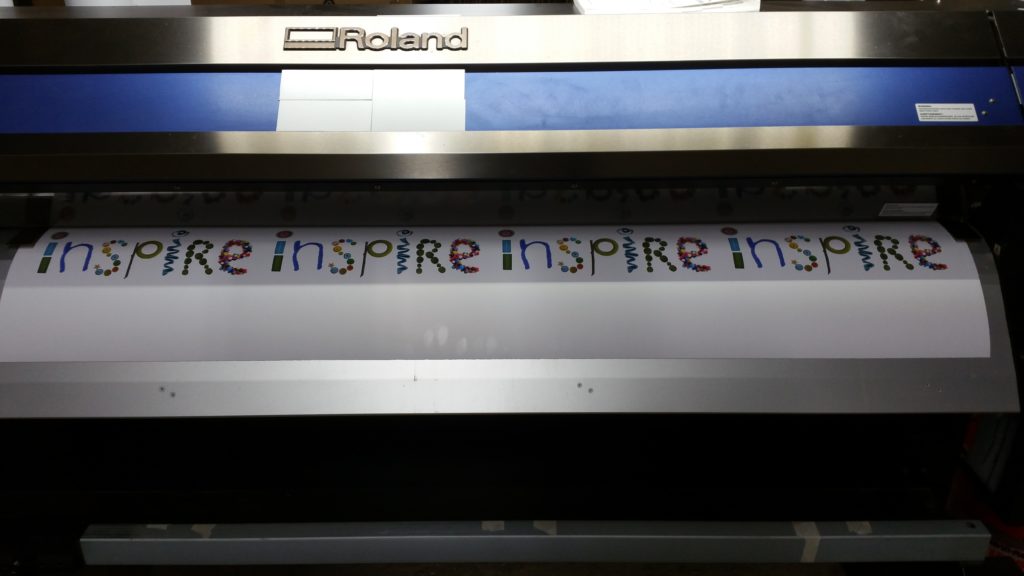
Where have you created signs that are not the first places people think of when talking about signs? What made those unique, interesting, or challenging?
That’s a hard question… I have produced and installed signs all over the Chicagoland area for many years. There are a couple graphics that I can recall a few that I thought were really unique….
The ceiling of an elevator… A local museum wanted to replace the ceiling tiles in their elevator to display an upcoming exhibit. So we printed full color images on a translucent material (so the light could still show through) and installed them into the ceiling tiles of their elevator.
A Bubble Machine… A client needed 6 toy bubble machines wrapped with their brand logo for an event. What I most remember is how difficult those 6 pieces were to do. The reason it was so hard was because of the way the bubble machine was curved.
What are some of the materials you use, and what helps determine when certain ones will be utilized? Can you give some examples of what type of materials would be used for various applications?
For printing we use all types of materials, but the most common are: adhesive back vinyl, window perf, and vinyl banner. For substrates the most common are: foamboard, PVC plastic, acrylic, aluminum, steel and coroplast (as used for political lawn signs). Material selection is all dependent on the client’s needs. Will the sign be indoors or outdoors? Temporary or long term? What kind of effect is the client looking for?
Most materials have a specific use. For example, adhesive backed vinyl would be used for a wall mural. Window perforated vinyl would be used for a window on a bus or store window so people can still see through the back side of the graphic. Foam Board would be used for temporary signs at an event as a directional sign. PVC plastic could be used for a long term solution to display a sign for a retail store. Metal substrates are typically used for a more permanent solution.
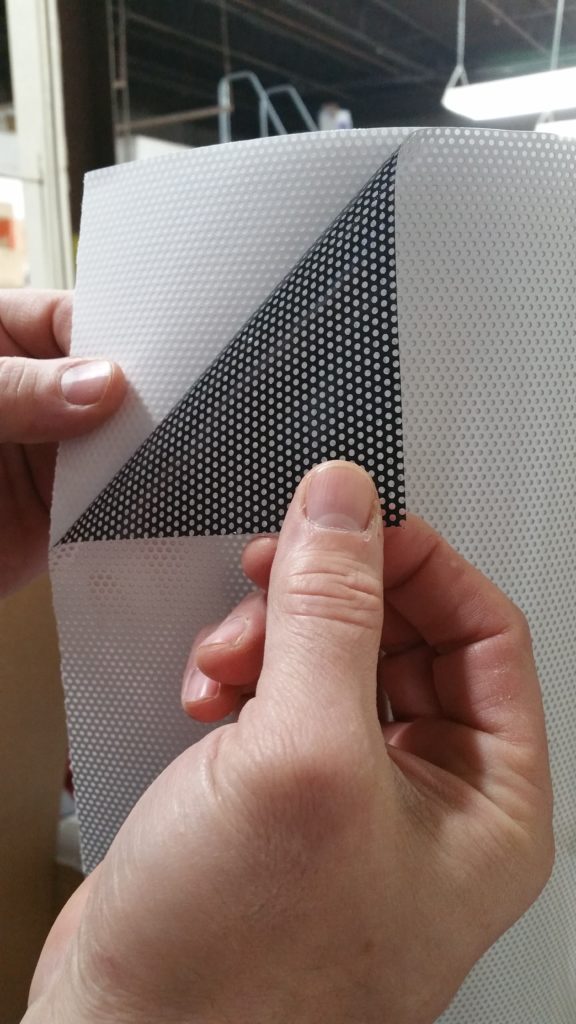
What are some of the challenges related to weather (other than simply being uncomfortable outside in the Chicago extremes)?
The weather, besides just being too cold or too hot for us to work, can affect the materials. For example, if it is too cold outside, our vinyl materials will not adhere properly to the materials onsite. Also, if it is too hot, the material could become too soft and not apply properly.
When you create a project that goes on a wall, door, or window, how permanent is it? What can you do to change how temporary or permanent a sign is?
Nothing lasts forever. However, with that being said, I have some projects that I have installed 10-12 years ago that are still up. Most cut vinyl are rated for a 3-5 year manufacturer’s warranty… but can last much longer. Digitally printed inks are typically a 5 year manufacturer’s warranty but if indoors and not constantly hit with direct sunlight, can last longer.
When discussing temporary vs. permanent, I always tell my clients “If someone wants to damage a sign no matter what it is made out of, they will damage it.” I tell them this so we can discuss a plan IF someone does damage a sign. I do my best to guide my clients to the best options for their given project so they can get the best bang for their buck!
What is something that you find absolutely necessary to do with each client?
Face to face meetings at the work site are highly encouraged. This gives me an opportunity to see their space, get measurements, see if there are any obstacles and get a complete picture for the scope of the project and make solid recommendations.
What are some of the changes in technology that have changed your business, creative process, and opportunities over the years?
Even though there have been many changes since I first started in the sign business, the industry has not made such dramatic changes where it would cause any changes to the creative, production, or installation processes.
In regard to the creative process… As a designer, I still sit and sketch designs out on paper before I go to the computer to create a final proof for the client.
The opportunities are there, getting your name out to the clients and letting them know all the services you offer is always the goal.
When you gave me a demonstration of cutting a phrase out of vinyl, you mentioned “welding” the letters. Explain what that is and why it was done? (It is one of those little things that made me appreciate the entire process more.)
When creating cut vinyl, to avoid the blade cutting into letters that overlap, we “weld” the letters together so none of the letters overlap each other and have a mis-cut.
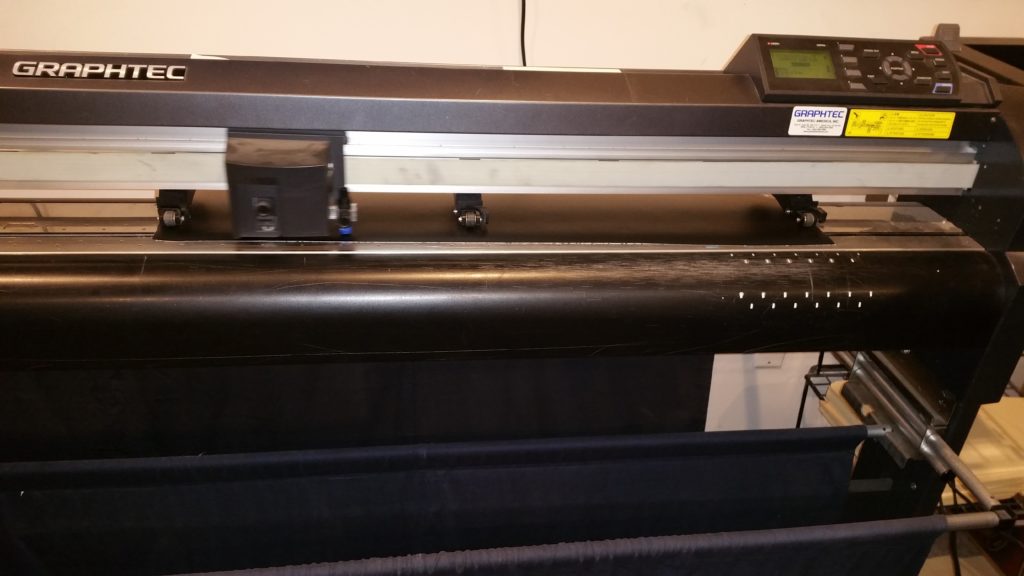
What are some of the other elements involved with your work beyond the physical making of a sign?
The biggest step (next to production) is installation. We need to make sure we are properly prepared for each install. We prepare a kit with all the tools we need: scissors, masking tape, various blades, glass cleaner, isopropyl alcohol, rags, garbage bags, a torch, application fluid, application squeegees and ladders. When on site, I need to work “small” which is difficult sometimes for a big guy like me…. Working “small” means trying to take up as little space as possible at the work site. Sometimes we are working at a location that is open to the public and I need to make sure that it is safe for pedestrians (and myself) in those situations.
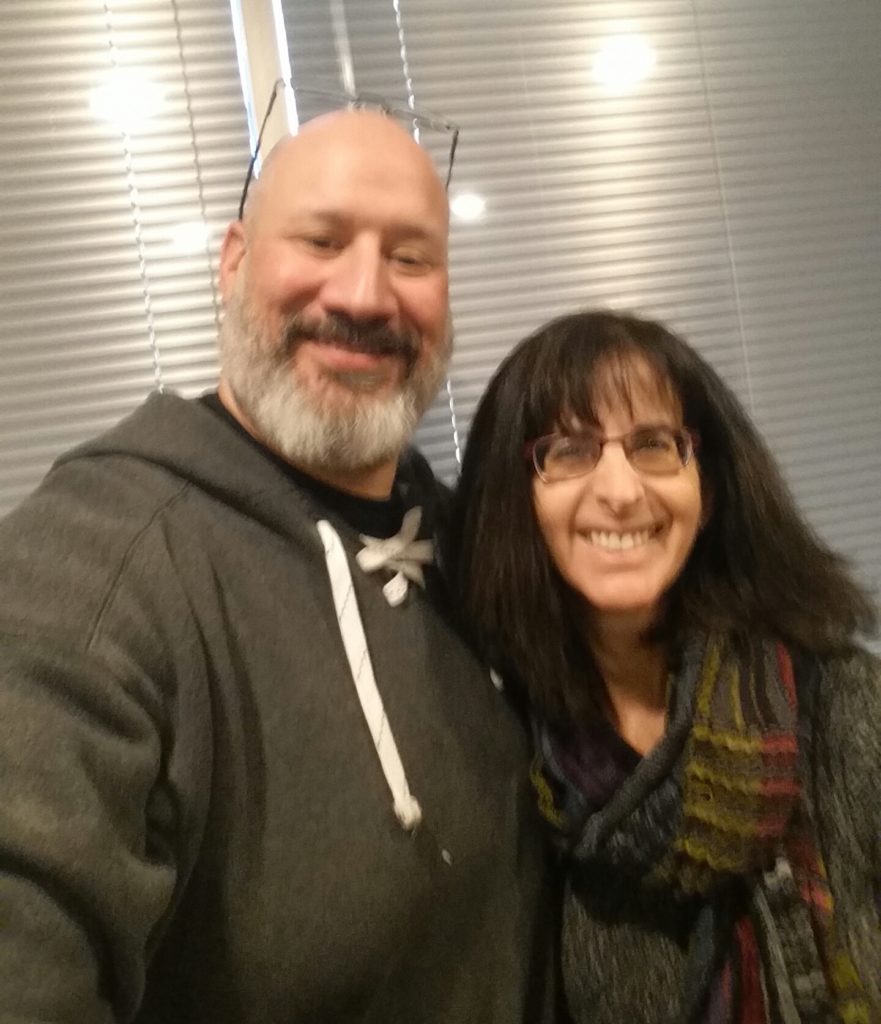
I had a great time spending the afternoon with Andrew! I truly gained a much greater appreciation for the creative process, production, and installation of various signs. I do look at them completely differently now than I had in the past. I know that there is actually more of a story behind each one. If any of you need some/any sort of signage, I can tell you with confidence that Andrew and Creative Edge Visual Solutions are the way to go! (With the current world situation, his services may come in handy in new and creative ways.)
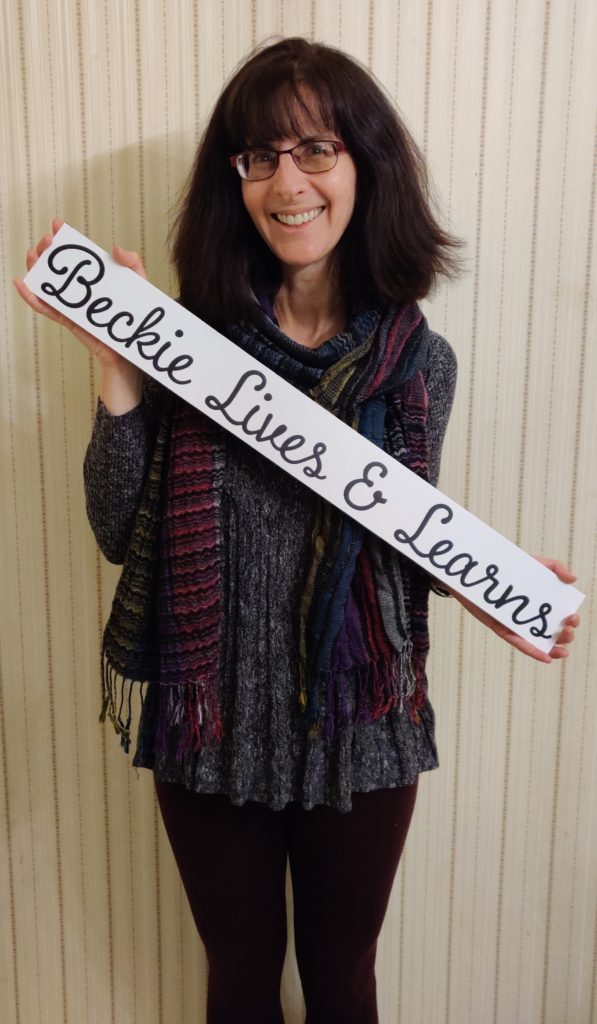
(Andrew wasn’t the only person in my community who offered to give me a sneak peak into his industry. Check out my very different experience with Ryan. Let’s just say that he knows how to party!)

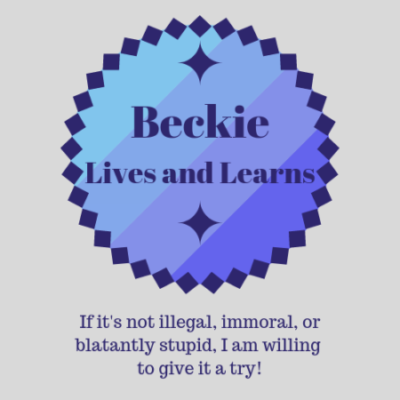
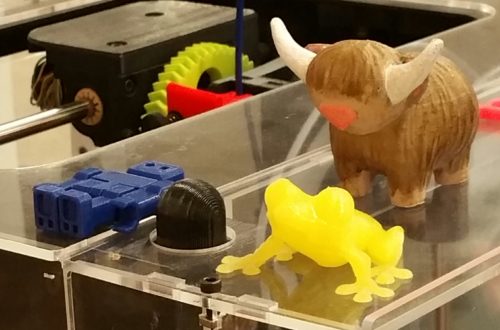
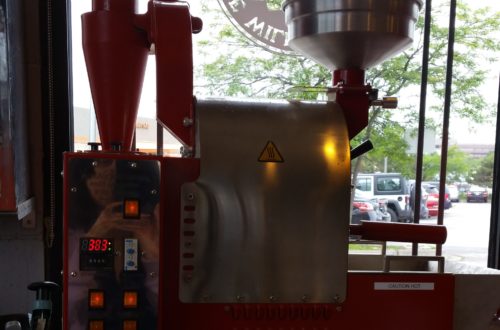
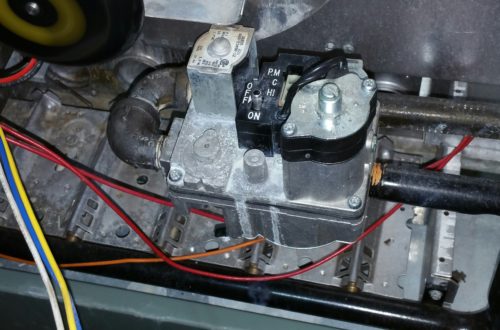
8 Comments
Steve Bergman
A fascinating and informative look at a business most people never think about. Thanks for sharing, Andy and Beckie!
Beckie
Glad you enjoyed it!
Tami
Wow! I had no clue how much went into the art of making signs. Great interview. I LOVE the part about the Matrix. Super awesome reference and it does make you think when you are out and about looking at “signs”. I never thought about the story behind each sign I do see.
Thanks for sharing this!
Tami
Beckie
Thank you! There are so many interesting things out there that normally we don’t even really notice. You are going to catch yourself paying more attention to signs (at least for a while). : )
Erica Bianco Ellis
I had no idea so much went into making a sign. I do love signs though, especially when traveling. I love to look at all the different signs and the way things are signed in other states and even countries. Thanks for sharing.
-Erica
Beckie
I am glad that you enjoyed it! The next time you go to the grocery store (the only place most people are currently going), look around (while keeping 6 feet away from everyone)!
SMS
Thanks so much for the blog post.
Pingback: